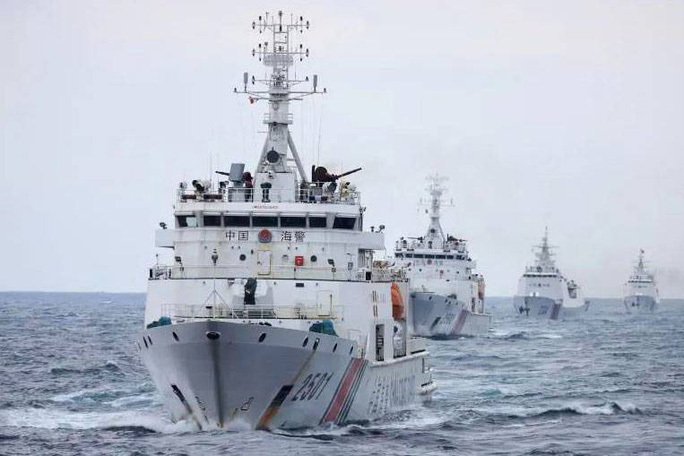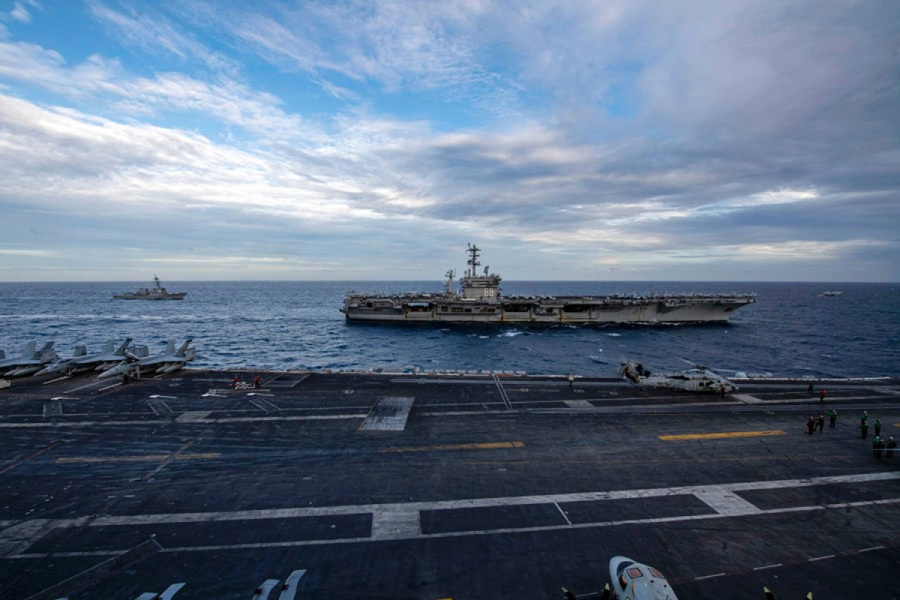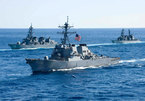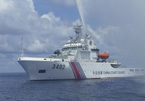Joe Biden has not made concessions to China and has not changed the tough line outlined by his predecessor, but only changed the approach.
The US State Department's press release dated February 19 affirmed the validity of the statement on July 13, 2020 on China's unlawful maritime claims in the East Sea (internationally known as the South China Sea), and the US’ standing firm in its respective alliance commitments.
 |
|
Chinese coast guard vessels. Photo: Kyodo
|
The press release reiterated the key points:
The US stance is similar to the statement of the 2016 Arbitral Tribal ruling on China's non-legal claims in the exclusive economic zones or continental shelf of the Philippines.
The US opposes any claim to waters outside the 12-nautical-mile territorial water of the claim islands in Truong Sa Archipelago (Spratly Islands).
It is illegal for China to banish exploration and fishing activities of other countries in the waters of other claimants, or to unilaterally exploit those resources. These waters are named in both claims such as the Reed Bank (Philippines), Tu Chinh – Vanguard Bank (Vietnam) or Luconia (Malaysia).
The February 19 statement paid much attention to concerns of countries about China's recent enactment of the Coast Guard Law, which took effect on February 1, 2021. Immediately after this law came into effect, Chinese coast guard vessels appeared in the Senkaku/Diaoyu area.
The US State Department said that the language in that law expressly ties the potential use of force, including armed force by the China Coast Guard, to the enforcement of China’s claims in ongoing territorial and maritime disputes in the East Sea.
This law allows the Chinese coast guard to open fire when it is necessary in the waters and airspace under Chinese jurisdiction without defining the term "necessary" and the areas under Chinese jurisdiction.
International observers are concerned that this law allows the Chinese coast guard to open fire in disputed waters, within the 9-dash line claim, to establish an Air Defense Identification Area (ADIZ), and to realize the intention of use national law to resolve international disputes, turning coast guard, a civilian-police force, into an armed force.
Opening fire to attack state ships, law enforcement forces of other countries will be considered an act of war.
Lack of restraint among forces in the region could lead to war, destabilizing and affecting peace, and the prosperity and development of the region and of the world.
The US State Department's press statement also stated that this law, which allows the coast guard to destroy other countries’ economic structures and to use force in defending China’s maritime claims in disputed areas, strongly implies this law could be used to intimidate China’s maritime neighbors.
Drastic moves on the field
 |
|
USS Theodore Roosevelt aircraft carrier appears with USS Nimitz in the East Sea on February 9, 2021. Photo: US Navy
|
Notably, the statement confirmed that the US will defend its alliance commitments to Japan and the Philippines when these countries are under attack.
The US reminds China of its obligations under the United Nations Charter to refrain from the threat or use of force, and to conform its maritime claims to the International Law of the Sea, as reflected in the 1982 Law of the Sea Convention (UNCLOS).
This shows that the US is aware of the need to unite countries against excessive behavior, violation of international law of a country, on the basis of respecting international law, sovereignty and interests of countries, not the "America First" policy as before.
In the field, the Biden administration also took drastic measures. One day after the China Coast Guard Law was approved on January 22, the US deployed a group of aircraft carriers including USS Theodore Roosevelt, cruiser USS Bunker Hill, destroyers USS Russell and USS John Finn in the East Sea.
On February 5, the destroyer John S. McCain first moved through the waters near the Hoang Sa archipelago (Paracel Islands) of Vietnam. Then, the second group of aircraft carriers USS Nimitz entered the East Sea on February 9 to join an exercise. This is the first time the US send two groups of aircraft carriers to the East Sea at the same time since July 2020.
After the exercise, on February 17, the USS Russell passed through the Spratly Islands. If it took the Trump administration five months to resume freedom of navigation (FONOP) operations after taking office, President Biden's response took place within a few days and with a large number of vessels, demonstrating a serious and powerful attitude.
Internationalizing East Sea disputes
Notably, US allies also sent warships to protect freedom of navigation in the East Sea. The UK sent HMS Queen Elizabeth to the Pacific Ocean through the East Sea in January 2021. France sent two ships, including the SNA Emeraude nuclear attack submarine to the East Sea. Germany also plans to send its ships to the East Sea in 2021.
The statement of the US and countries outside the region show solidarity with small countries against the attitude of power, protesting against the use of force and threatening to use force in resolving disputes in the East Sea.
This proves that the internationalization of the East Sea disputes has become more clearly. The world is paying more attention to and is carefully considering the activities and attitudes of the disputing parties in the East Sea, expecting the parties to restrain and soon settle disputes by peaceful means, in accordance with the UN Charter and UNCLOS.
Nguyen Hong Thao

East Sea 2020: The US adjusts its policy, Southeast Asia gets tough with China
Facing China's actions, the United States increased military operations in the East Sea and adjusted its policy towards endorsing the Permanent Court of Arbitration (PCA)'s ruling in 2016.

China’s Coast Guard Law increases risk of collision in the East Sea
Analysts say that China’s Coast Guard Law is an attempt to set the stage for China's coast guard to increase assertive behavior in the East Sea.